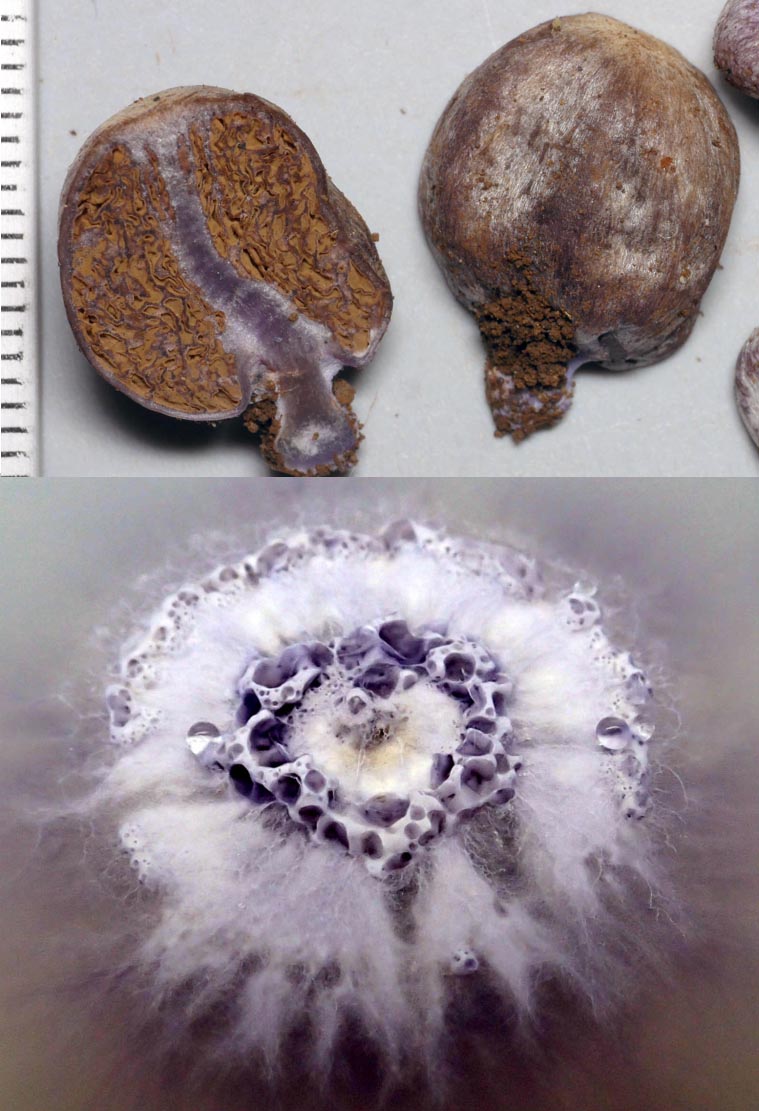
Cortinarius is a large genus of fungi containing both
mushroom and truffle-like species, most of which form
ectomycorrhizal associations with trees. Cortinarius aff.
campbelliae forms this symbiotic link with
Eucalyptus nitens, a quick-growing tree used
extensively in forestry plantations. The fungus forms a sock-like
envelope (mantle) around roots and the hyphae interpenetrate
between plant cells forming a Hartig net where plant carbon from
photosynthesis is exchanged for phosphorus, nitrogen and water. The
fine mycelial strands of the fungus can access supplies of water
and minerals from locations in substrates denied to the thicker
plant roots. This symbiosis makes C. aff.
campbelliae one of those fungi indispensable for health of
plantations of E. nitens, a tree with potential as an
energy crop. The lignocellulose of E. nitens timber can be
used as a feedstock for processes under development that use other
fungi to produce fuel ethanol. C. aff.
campbelliae is a truffle-like fungus dependent on being
eaten by small mammals for the dispersal of its spores, a lifestyle
that is adaptive in a dry climate as it reduces desiccation, an
inherent risk for fungi with emergent fruiting bodies that scatter
spores by wind. The genome of C. aff. campbelliae
will help reveal how truffle-like species evolved from closely
related mushroom-like Cortinarius species by comparing
genomes of taxa with different fruitbody forms. Given current
predictions of a drying climate, understanding pathways to this
adaptation and how to manipulate them genetically may be crucial
for managing the health of future forestry energy plantations.
C. aff. campbelliae is particularly favourable
for such initiatives as, unlike most mycorrhizal fungi, it can be
grown in pure culture on agar plates.
